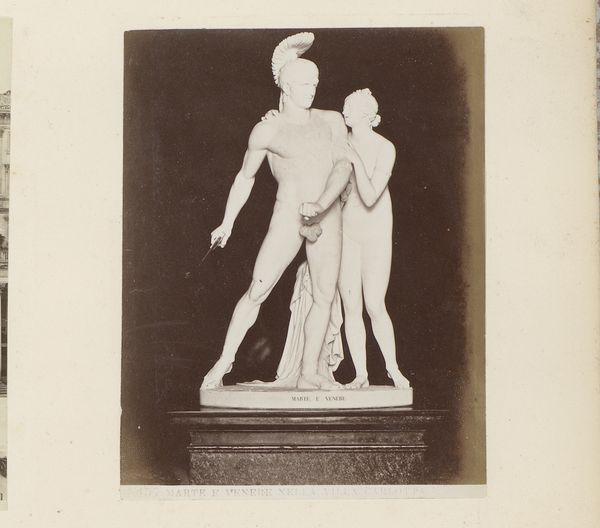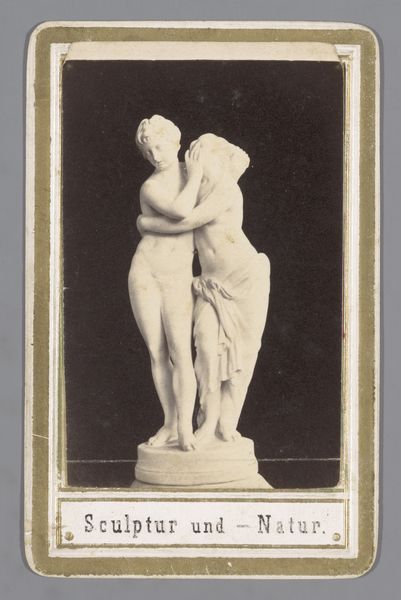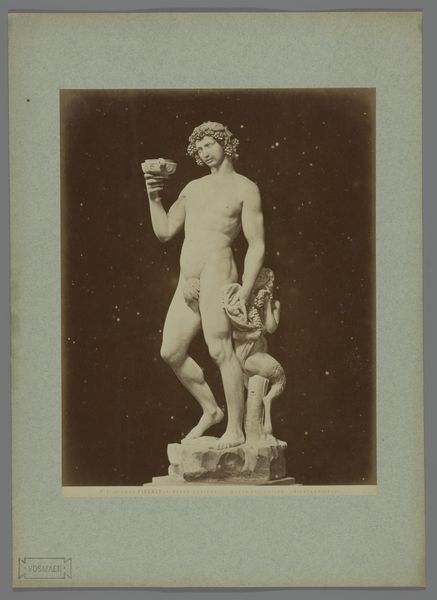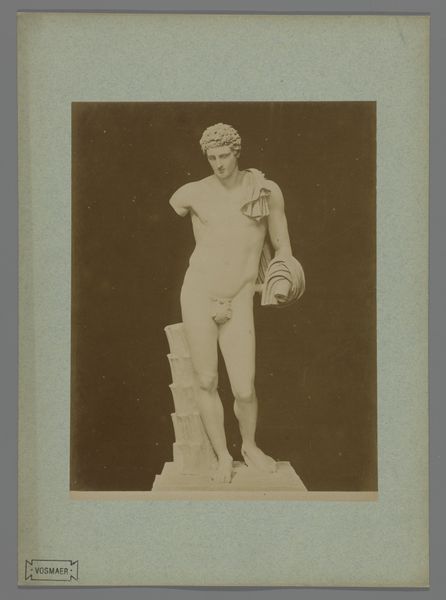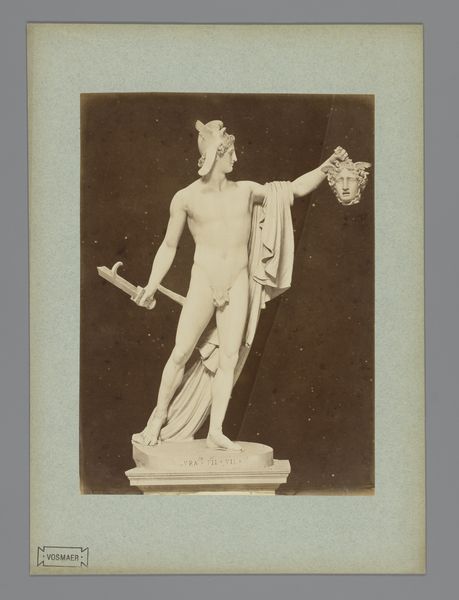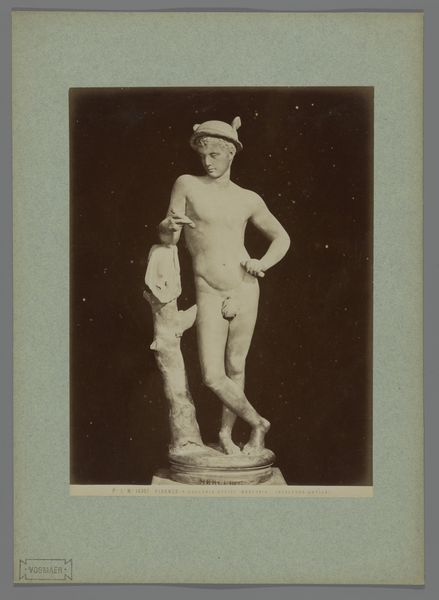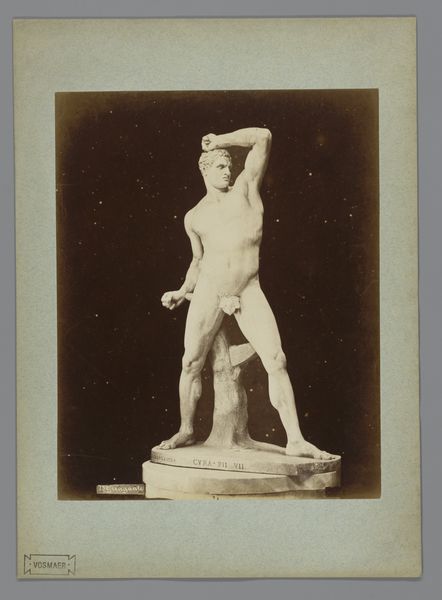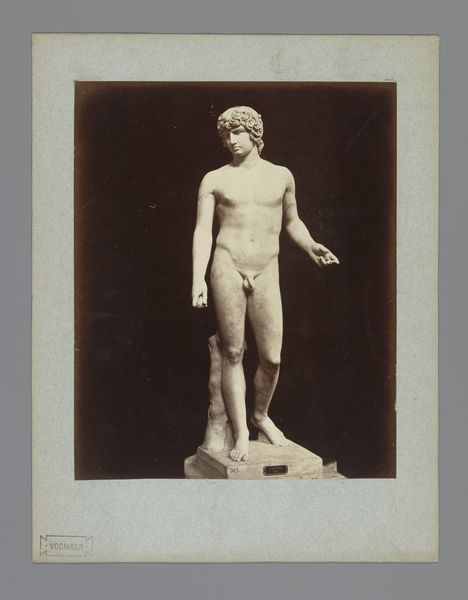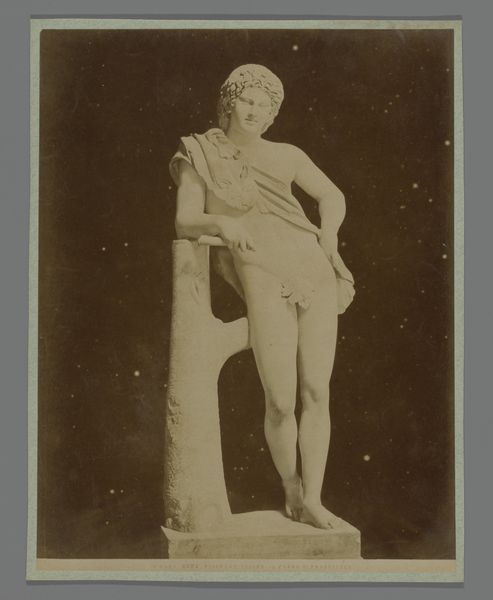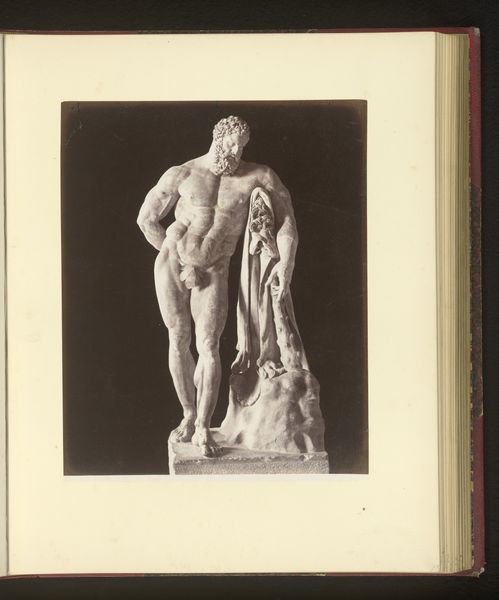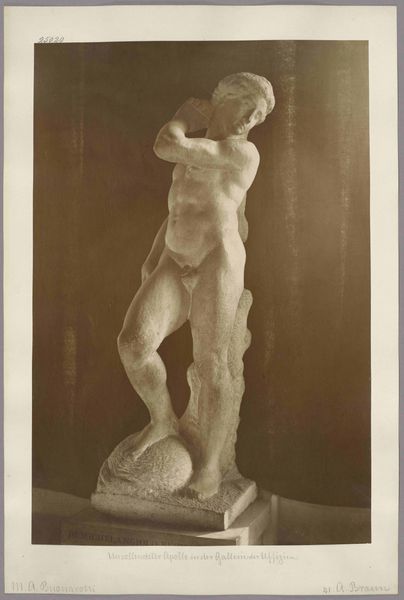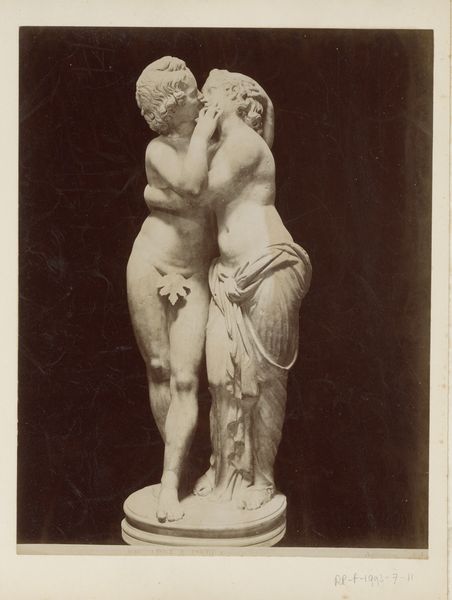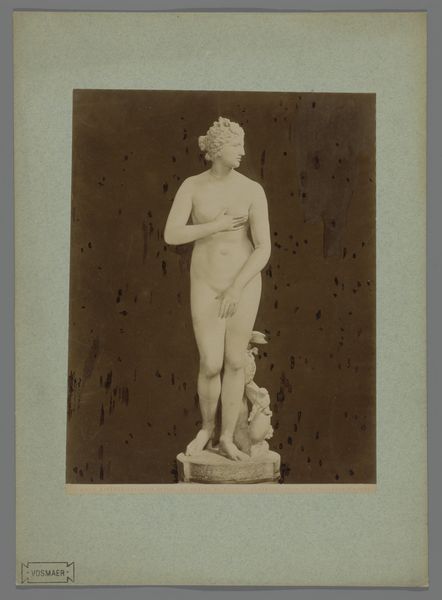
Sculptuur van Bacchus en Ampelos in de Galleria degli Uffizi te Florence, Italië 1857 - 1900
0:00
0:00
fratellialinari
Rijksmuseum
photography, sculpture, marble
#
portrait
#
greek-and-roman-art
#
figuration
#
photography
#
sculpture
#
academic-art
#
marble
#
statue
Dimensions: height 259 mm, width 192 mm, height 355 mm, width 255 mm
Copyright: Rijks Museum: Open Domain
Editor: This is a photograph by Fratelli Alinari, dating sometime between 1857 and 1900, of a marble sculpture, "Sculptuur van Bacchus en Ampelos in de Galleria degli Uffizi te Florence, Italië." I'm immediately struck by the intimacy captured here, despite the formality of the photographic style. What do you make of this almost brotherly connection between the figures? Curator: Ah, yes, Bacchus and Ampelos, caught in a rather tender moment. It's curious, isn't it? While academic art often aims for a grand, almost detached ideal, here we have a definite leaning into, shall we say, the softer side of myth. Given that the image has been captured photographically, do you feel that shifts our perceptions away from conventional heroic renderings? Editor: Absolutely! Seeing it as a photograph rather than a painting or sculpture emphasizes its immediacy. I’m also picking up on a possible tension between the sculpture's inherent classical subject matter and the photographer’s artistic license to re-interpret through his particular medium. Curator: A delicious tension, indeed! Look closely at Ampelos gazing at Bacchus - note his almost pleading stance. Alinari isn’t simply documenting, he’s suggesting a narrative. Do you suppose he’s inviting us to consider Bacchus not just as a god of wine, but perhaps something…more intimately human? One might imagine it’s all about divine acceptance. Editor: That's really insightful. I was focusing on the formal aspects, but thinking about the possible narrative adds another layer. I like your interpretation on divine acceptance; especially since myth's tales are never totally complete and continuously offer up ways of filling in the blanks. Curator: Precisely! It dances with that in-between space, the lovely ambiguous muddle of human relations, which is really, isn't it, what great art often points toward. And if it leaves us something to reflect on then the photograph has certainly earned its keep!
Comments
No comments
Be the first to comment and join the conversation on the ultimate creative platform.
